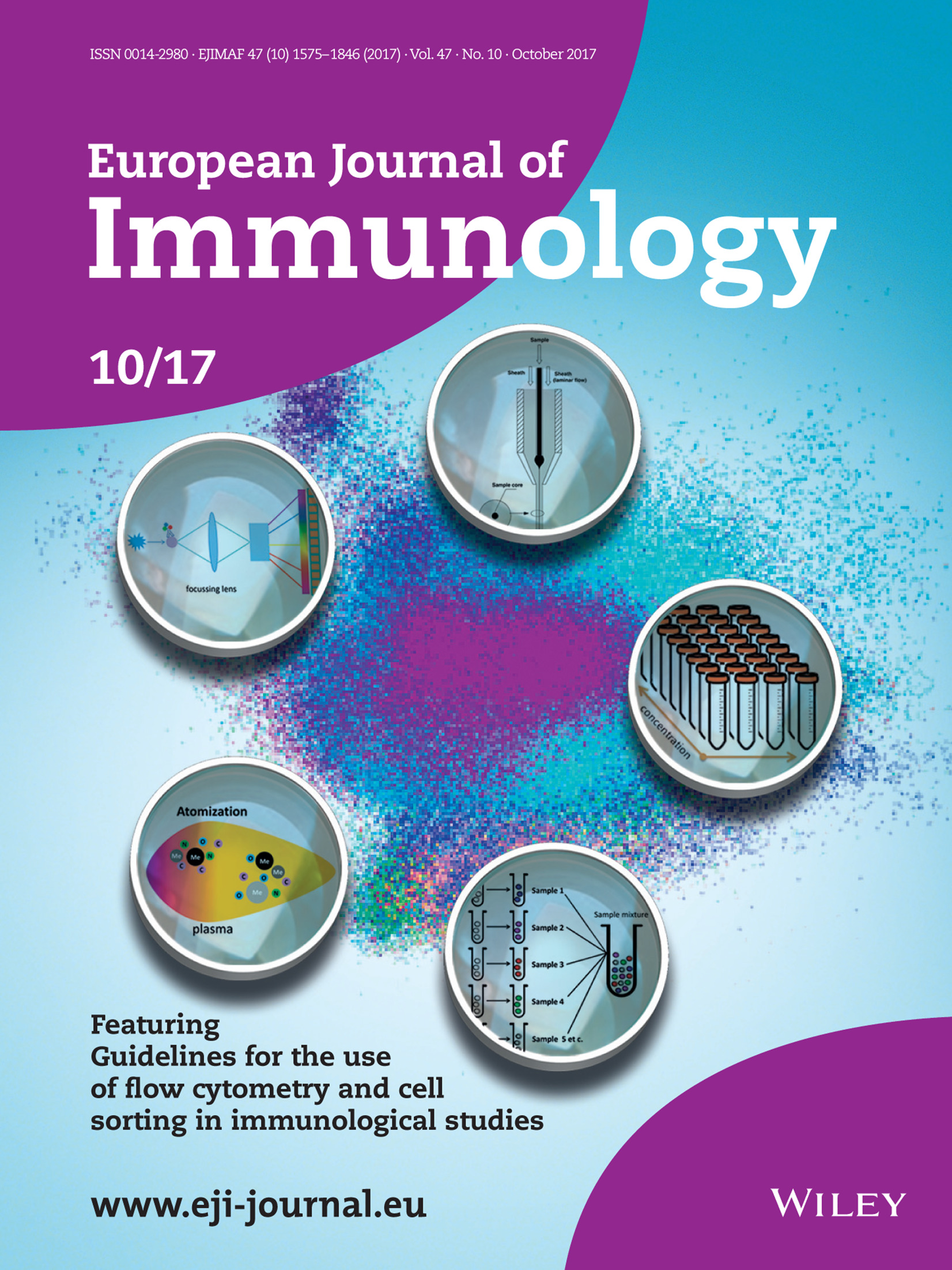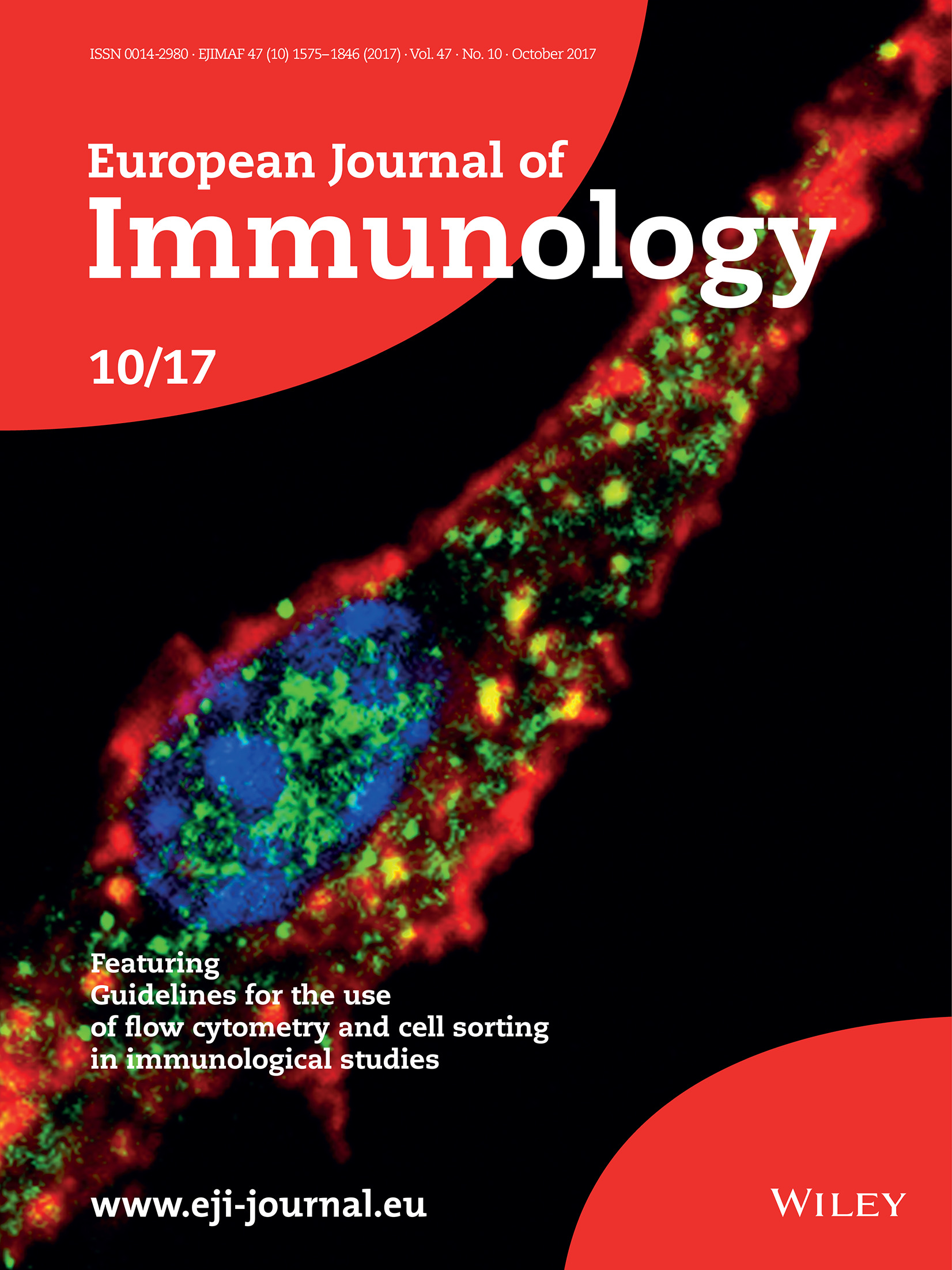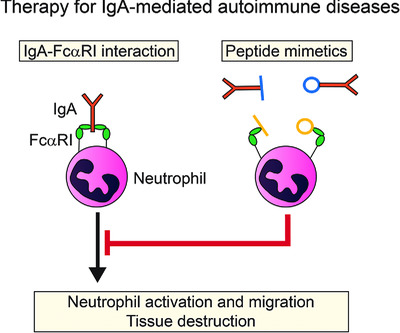Journal list menu
Export Citations
Download PDFs
Cover Picture
Cover Picture: Eur. J. Immunol. 10'17
- First Published: 11 October 2017

Our front cover features images related to flow cytometry techniques ranging from optics to sample preparation and processing, superimposed on a multidimensional immune cell population scatter plot. These images are taken from the Flow Cytometry Guidelines (Cossarizza et al. pp. 1584–1797), a comprehensive resource prepared by flow cytometry and immunology research experts from around the world. The Flow Cytometry Guidelines not only highlight the latest trends and best practices in basic and advanced flow cytometry but also re-enforce optimal sample preparation, as well as data analysis, enabling the correct use of state of the art flow cytometry for all involved in immunological research.
Back Cover
Cover Picture: Eur. J. Immunol. 10'17
- First Published: 11 October 2017

Our back cover features a dendritic cell infected with herpes simplex virus 1 as captured by confocal microscopy. Infected bone marrow-derived dendritic cells were stained for viral glycoprotein, gD (red), autophagosomal marker protein, LC3 (green) and nucleus (blue). The colocalization of gD and LC3 (yellow) demonstrates the capture of the viral proteins by autophagosomes. This image is taken from Budida et al. (pp. 1819–1834), who studied the role of autophagy in processing and MHC class I presentation of HSV-1 antigens in dendritic cells.
Editorial Board
Contents
Editorial
Go with the immunological flow – Guidelines for flow cytometry
- Page: 1578
- First Published: 11 October 2017
Forum
Issue Highlights
News & EFIS
2017 German Society for Immunology PhD and Postdoctoral Prizes — Q&A with the winners
- Pages: 1580-1583
- First Published: 11 October 2017
Highlights
Guidelines for the use of flow cytometry and cell sorting in immunological studies*
- Pages: 1584-1797
- First Published: 11 October 2017
Commentary
Basic
Spreading the load: Antigen transfer between migratory and lymph node-resident dendritic cells promotes T-cell priming
- Pages: 1798-1801
- First Published: 28 August 2017
Adaptive immunity
Research Article
Basic
Active dissemination of cellular antigens by DCs facilitates CD8+ T-cell priming in lymph nodes
- Pages: 1802-1818
- First Published: 05 September 2017

A virally-infected peripheral DC expresses viral antigens and carries them to the draining lymph node. There, the rare incoming DC actively transfers the antigen to lymph-node-resident CD11c+ DCs, likely through an ICAM1-LFA1-mediated pathway. Antigen dissemination increases the total number of antigen-presenting DCs and facilitates CD8+ T cell priming and proliferation.
Immunity to infection
Research Article
Basic
Herpes simplex virus 1 interferes with autophagy of murine dendritic cells and impairs their ability to stimulate CD8+ T lymphocytes
- Pages: 1819-1834
- First Published: 03 August 2017
Immunomodulation and immune therapies
Research Article
Basic
Peptide mimetics of immunoglobulin A (IgA) and FcαRI block IgA-induced human neutrophil activation and migration
- Pages: 1835-1845
- First Published: 24 July 2017

The interaction between IgA and the IgA Fc receptor (FcαRI) leads to potent neutrophil activation and migration, resulting in tissue damage in IgA-mediated autoimmune skin blistering diseases. Here we show the therapeutic potential of peptide mimetics that block the interaction between IgA and FcαRI.







